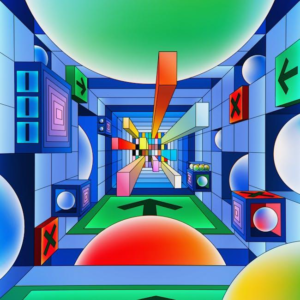How Neural Rendering Will Transform Visual Effects Creation
Visual effects (VFX) have always been at the forefront of technological innovation in cinema, gaming, and virtual production. In recent years, neural rendering has emerged as a game-changing advancement, poised to revolutionize how artists and studios create stunning visual effects. By harnessing the power of artificial intelligence and deep learning, neural rendering delivers unprecedented realism, speed, and flexibility – setting a new benchmark for the future of VFX creation.
What Is Neural Rendering?
Neural rendering refers to a set of AI-driven techniques that use neural networks to synthesize or enhance images and videos by understanding scene geometry, lighting, and textures. Unlike traditional rendering methods that rely heavily on CPUs and GPUs simulating physics-based light transport, neural rendering learns from vast datasets, enabling more realistic and adaptive visuals on-the-fly.
Key technologies involved include Generative Adversarial Networks (GANs), deep convolutional networks, and volumetric neural representations.
Why Neural Rendering Matters in Visual Effects
Traditional VFX pipelines often require extensive manual work, complex simulations, and time-intensive rendering farms. Neural rendering offers significant advantages in the following ways:
- Faster turnaround times: Accelerates image synthesis and compositing, allowing artists to see results in real-time or near-real-time.
- Enhanced photorealism: Neural networks can model subtle lighting effects, surface details, and atmospheric nuances difficult to achieve with classic rendering.
- Improved flexibility: Artists can manipulate scenes interactively, adjusting lighting, camera angles, or textures guided by AI without re-rendering the entire scene.
- Cost efficiency: Reduces reliance on expensive rendering hardware and optimizes workflow productivity.
How Neural Rendering Works: The Basics
At the core, neural rendering systems ingest 3D scene data or 2D images and learn to recreate or enhance them using trained neural networks. Some common approaches include:
- Neural Radiance Fields (NeRFs): Model 3D scenes as volumetric functions allowing view synthesis from novel angles with impressive realism.
- Image-to-image translation: Tools like style transfer and super-resolution leverage deep networks to refine textures and lighting dynamically.
- Hybrid rendering pipelines: Combine traditional rasterization or ray tracing with neural modules to optimize complex effects.
Benefits of Neural Rendering for VFX Artists and Studios
| Benefit | Description | Impact on VFX Workflow |
|---|---|---|
| Speed | Neural networks generate realistic frames faster than traditional render engines. | Enables near-real-time previews, shortening production cycles. |
| Quality | Captures fine lighting, texture, and environmental effects naturally. | Results in higher visual fidelity and audience immersion. |
| Resource Efficiency | Reduces heavy dependency on large rendering farms. | Cuts costs and power consumption. |
| Creative Freedom | Allows flexible scene manipulation after initial capture. | Facilitates iterative design and creative experimentation. |
Practical Tips for Integrating Neural Rendering into Your VFX Pipeline
- Start small: Experiment with neural rendering tools on specific tasks like texture enhancement or view interpolation before full pipeline adoption.
- Leverage cloud computing: Access AI-powered rendering services that reduce hardware investment.
- Collaborate with AI specialists: Integrate multidisciplinary teams including machine learning engineers and traditional VFX artists.
- Train custom models: Collect project-specific datasets to fine-tune neural networks for your unique artistic style and requirements.
- Stay updated: Neural rendering is rapidly evolving-keep an eye on industry research, software updates, and case studies.
Case Studies: Neural Rendering in Action
Several high-profile projects have begun to harness neural rendering techniques successfully:
- Virtual Cinematography in Film: Directors use NeRF-based systems to generate new camera angles from limited on-set footage, dramatically expanding creative possibilities without re-shooting scenes.
- Video Game Asset Creation: Neural rendering speeds up realistic character and environment design with real-time feedback, enhancing immersion in large open-world games.
- Commercial Advertising: AI-enhanced composites produce vibrant, photo-realistic product visualizations at a fraction of the cost and time.
The Future of Visual Effects with Neural Rendering
As neural rendering technologies mature, we can expect a seismic shift across the VFX landscape:
- Democratization of Effects: Smaller studios and independent creators will gain access to powerful rendering capabilities previously exclusive to large budgets.
- Interactive Media: Real-time neural rendering will enable new forms of live digital performances and interactive films.
- Augmented and Virtual Reality: Enhanced scene realism will heavily improve user immersion and experience in AR/VR environments.
Conclusion
Neural rendering is not just a technological novelty-it’s a pivotal evolution that promises to transform visual effects creation from a resource-heavy challenge into an accessible, flexible, and highly creative process. By combining the power of AI with traditional artistry, neural rendering will empower VFX professionals to push the boundaries of what’s visually possible, all while accelerating workflows and lowering production costs.
For artists and studios aiming to stay ahead in the competitive world of VFX, embracing neural rendering is more than a smart choice-it’s essential. The future of visual storytelling is neural, and embracing this technology could be the key to unlocking unparalleled cinematic experiences.











